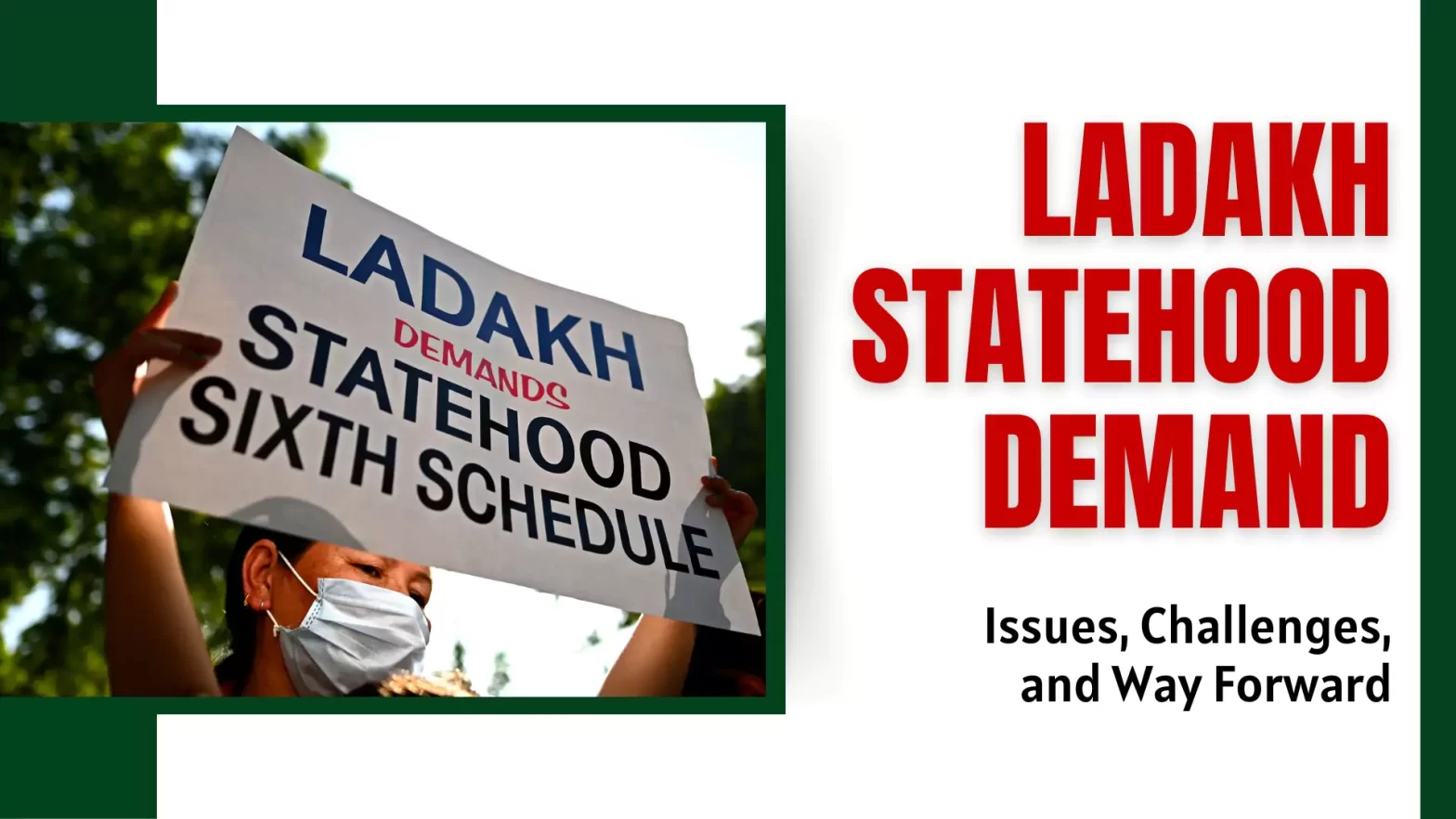Context:
This editorial is based on the news “Why Ladakh has turned to mass protests in freezing temperatures | Explained” which was published in the Hindu. Thousands of people in Leh have returned to the streets to their demand for full statehood for the Union Territory of Ladakh.
Ladakh Protests
- Called by: The shutdown has been called by the Leh Apex Body (LAB) and the Kargil Democratic Alliance (KDA), two important political groups in Ladakh.
- Reason: The most important reason behind the protest is the inclusion of Ladakh in the Sixth Schedule of the Constitution to protect the region’s land, culture, language, and environment.
- Historical Context: The abrogation of Article 370 in the year 2019 repealed the special status conferred to erstwhile Jammu and Kashmir State and Ladakh was set up as a Union Territory without a legislature.
Major Demands of Ladakh: Ladakh Statehood Demand And Inclusion In Sixth Schedule
-
Full-Fledged Legislature Demand For Ladakh
- People in Ladakh, particularly from the Leh district, are demanding full-fledged statehood with a legislature.
- Demands Include: Greater autonomy and decision-making power on local issues, increased political representation, protection of Ladakhi culture and identity and concerns about potential demographic changes and loss of job opportunities.
-
Ladakh Sixth Schedule Demand
- Protection to Tribal Identity: Ladakh’s population predominantly comprises Buddhist tribes with distinct cultural and linguistic identities.
- Conservation of Land and Resources: Ladakh’s fragile ecosystem and resources are vulnerable to exploitation. The 6th schedule’s provisions on land rights and control over natural resources offer potential safeguards against external interference.
- Political Representation: Ladakh’s current status as a UT with limited legislative powers raises concerns about inadequate representation and control over local decision-making. The Sixth Schedule guarantees to address this concern.
- Separate Lok Sabha seats for Leh and Kargil: Activists and leaders of the socio-political bodies are demanding an increase in the number of Lok Sabha seats from one to two.
- Currently, Ladakh has only one Lok Sabha seat, encompassing both Leh and Kargil districts. This was established after Ladakh became a separate Union Territory in 2019.
- Job Reservations for Locals: Reservation aims to create more employment opportunities for Ladakhis, boosting the local economy and reducing dependence on outside resources.
- Historical Disadvantage: Ladakhi raises concern for lack of access to education and employment and asking for reservation, a necessary step towards equality.
- Protection of Ladakhi Identity and Culture: Ensuring residents have access to jobs is crucial for preserving Ladakhi culture and way of life.
Central Government Response to Ladakh Statehood Demand
- Not Keen in Granting Statehood: The Central Government has not shown keen interest in granting full Statehood and Special Status to Ladakh, but rising discontent forced the center to set up a committee in January 2023 to look into the measures to find a balance.
- High Power Committee to Probe the Matter: Amid the rising protest, the Central Government set up penal and assured protestors to look for an appropriate solution. The ministry urged the leaders not to hold protests while the official talks were on.
- Resistance to Special Status to Ladakh: The Ministry of Home Affairs claimed that the UT administration was already taking care of overall socio-economic development, and sufficient funds have been provided for the region’s overall development.
Conclusion
Ladakh has experienced multiple shutdowns, street protests and demonstrations. In order to successfully come out and win the situation, there is a need to preserve the interests of the Ladakhis by increasing local ownership, making their say in decision-making processes, need to provide quality education to solve this reservation issue and most importantly need to follow sustainable tourism.
![]() 17 Feb 2024
17 Feb 2024

